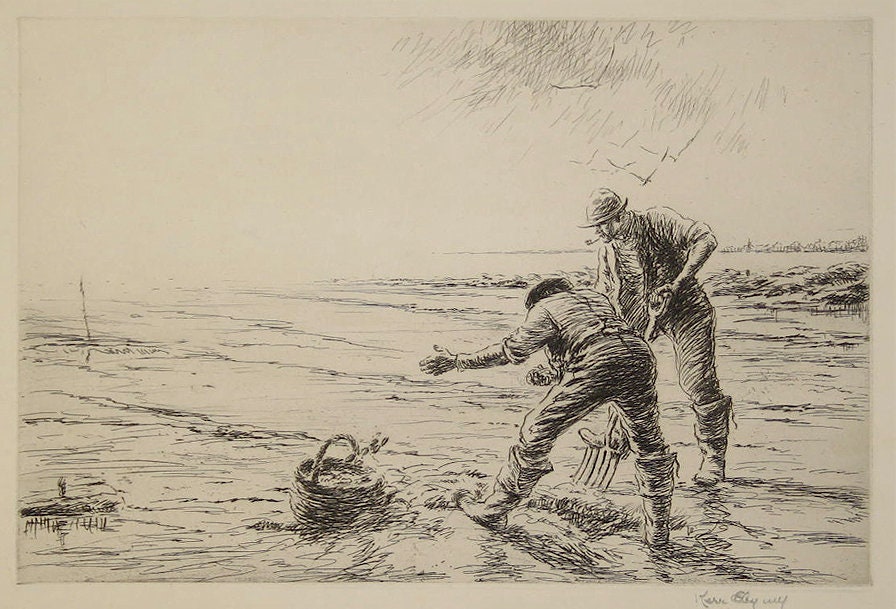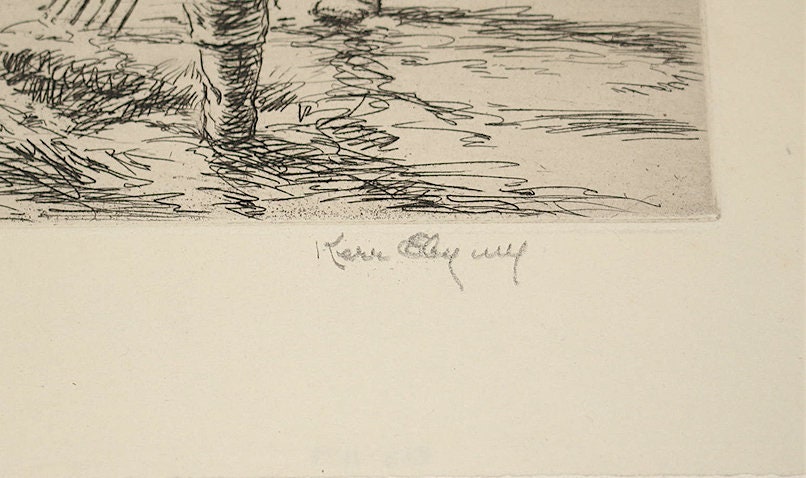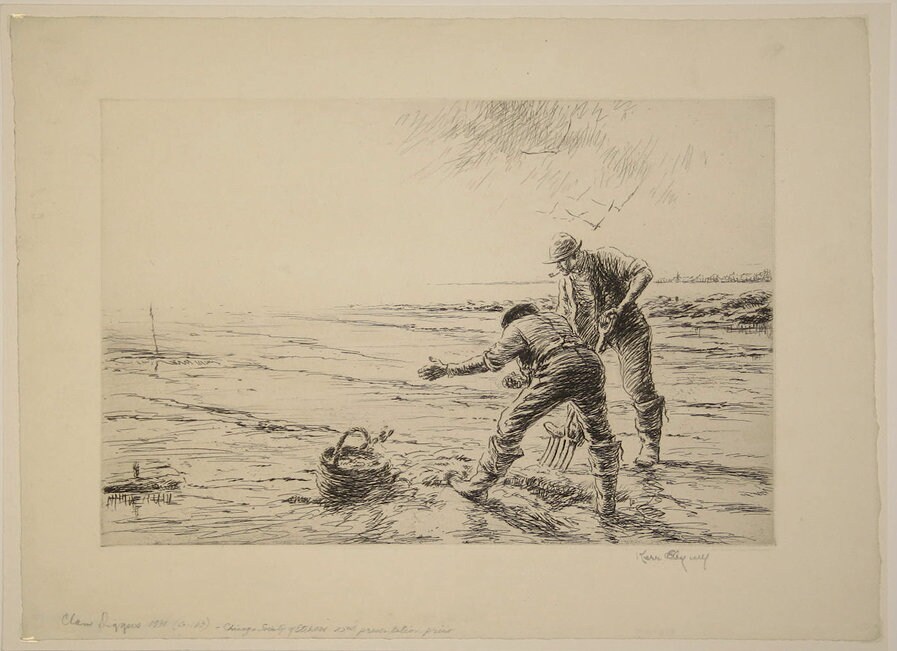


Connecticut Artist Kerr Eby Rare Pencil Signed 1931 Trial Proof Etching Digging for Clams Maine
$325.00
Digging Clams is a rare Trial Proof of an etching produced in 1931 by Connecticut artist Kerr Eby. This Trial Proof was printed by the artist before the edition of 350 that was printed and published by the Chicago Society of Etchers.
Title: Digging Clams
Artist: Kerr Eby - (1889-1946) - American artist
Technique: Etching
Signature: Signed in pencil by the artist and with "imp" after his name indicating he was the printer.
Date Published: 1931
Edition: A rare Trial Proof printed by Eby before the edition of 350 which was published by the Chicago Society of Etchers. Eby didn't write "Trial Proof" on the print, but according to the Eby catalog raisonne he printed the Trial Proofs of Digging Clams but not the edition so those impressions are not inscribed "imp" after Eby's signature." This one is.
Condition: Excellent Condition without any flaws. Without age toning, foxing, tears, or creases.
References: Listed as catalog No. 163 in Kerr Eby, The Complete Prints (1997) by Bernadette Passi Giardina.
This etching was published in 1931 as the 22nd Presentation Print for the Chicago Society of Etchers.
Printing: Printed by the artist in black ink on handmade J. Whatman paper. This sheet has the full margins as printed.
Presentation: Unmatted and unframed. Blank on the back, not laid down. Ships in a plastic sleeve.
Description: This 1931 etching shows two clam diggers at work along what is likely the coast of Maine. One man is digging the clams with a fork, and the other one is tossing them into a basket resting in the surf.
This is a well composed panoramic view with a stretch of open sky and sea and a distant harbor in the background.
We guarantee the authenticity of all the art we sell. We offer accurate descriptions and clear photographs so buyers know exactly what they are bidding on.
Kerr Eby was born in Tokyo to Canadian missionary parents. A few years after his birth the family returned to Canada until 1907 when he went to New York to pursue his artistic studies.
He studied art at the Pratt Institute and later at the Art Students League. He also spent several summers (from 1913 to 1917) at the artist colony in Cos Cob, Connecticut.
Eby’s specialty was draftsmanship, including not only drawing but also etching and lithography, and he was also recognized as a master printmaker.
His friend, artist John Taylor Arms (1887-1953), whose own printmaking abilities are often considered to be unsurpassed, cited Eby for his technical versatility and brilliance, claiming that his works were "some of the finest prints and drawings produced by an American artist."
Eby’s uncle, Frederick Keppel Sr., was a leading influential art dealer in New York at the end of the 19th and beginning of the 20th centuries. Keppel had played a key role in introducing prints as a fine art form to America. The Keppel Gallery assisted Eby in his career.
When the United States entered World War I in 1917, Eby enlisted and was assigned to the 40th Engineers, Artillery Brigade, Camouflage Division, which was sent to the war front where the Division helped to protect the troops.
Eby saw much battle action, especially in northeastern France. In addition to his work as a soldier, he also made drawings of the images he witnessed on the battlefield. Many of those images were later turned into etchings and lithographs.
In 1943 Eby contracted a tropical disease while living with the troops for three weeks in a foxhole in the jungles of Bougainville, a condition from which he never fully recovered and which contributed to his early death. He died at his home in Norwalk, Connecticut in 1946.